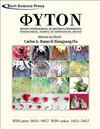非洲苏铁物种灭绝风险综述
IF 1.2
4区 生物学
Q3 PLANT SCIENCES
Phyton-international Journal of Experimental Botany
Pub Date : 2016-07-27
DOI:10.32604/PHYTON.2016.85.333
引用次数: 8
摘要
长期以来,非洲特有的苏铁面临着灭绝的高风险。为了减少失去这些高度濒危物种的风险,已经采取了一些保护措施。在这项研究中,我们回顾了目前所有非洲苏铁物种灭绝的风险。我们使用IUCN(国际自然保护联盟)2014年濒危物种红色名录计算了非洲苏铁中每一类物种的百分比。我们将我们的结果与Donaldson(2003)十年前对世界自然保护联盟不同种类苏铁在非洲的百分比进行的研究结果进行了比较。我们还计算了非洲苏铁种群趋势的百分比。当比较这些结果时,我们发现在过去的十年中,苏铁的保护没有任何改善,尽管在此期间做出了一些保护努力。人口趋势的结果也表明,大多数非洲苏铁正在经历人口减少。这些结果表明,非洲苏铁的灭绝风险仍然很高,仍然需要大量的保护工作来妥善解决导致这些濒危物种灭绝的生态因素。本文章由计算机程序翻译,如有差异,请以英文原文为准。
Review of extinction risk in African Cycads
Over a long period of time, cycads endemic to Africa have been facing high risk of extinction. Several conservation efforts have been made to reduce the risk of losing these highly endangered species. In this study we review the current risk of extinction of allAfrican cycads species. We calculated the percentages of each category of species found in African cycads using the IUCN (International Union of Conservation of Nature) red list of threatened species 2014 version. We compared our result with that of Donaldson (2003) on percentages of different categories of IUCN for cycads in Africa which was carried out a decade ago. We also calculated the percentage of population trend in African cycads. When comparing these results, we discovered that over one decade there was no improvement in cycads conservation despite several conservation efforts that were made during this period. The results of the populationtrend also showed that the majority of African cycads are experiencing population decreases. These results highlight that the risk of extinction of African cycads is still very high and much conservation effort is still required to properly tackle ecological factors pushing these endangered species to extinction.
求助全文
通过发布文献求助,成功后即可免费获取论文全文。
去求助
来源期刊
CiteScore
1.90
自引率
11.80%
发文量
17
审稿时长
12 months
期刊介绍:
Phyton-International Journal of Experimental Botany is an international journal that publishes on the broadest aspects of plant biology and ecology. The journal welcomes the original and exciting submissions that provide new and fundamental insights into the origins, development, and function of plants from the molecular to the whole organism and its interactions within the biotic and abiotic environment. Phyton-International Journal of Experimental Botany publishes outstanding research in the plant and ecology sciences, especially in the areas of plant physiology and biochemistry, plant metabolism, plant ecology and evolution, as well as those making use of synthetic, modeling, bioinformatics, and -omics tools. Manuscripts submitted to this journal must not be under simultaneous consideration or have been published elsewhere, either in part or in whole.

 求助内容:
求助内容: 应助结果提醒方式:
应助结果提醒方式:


